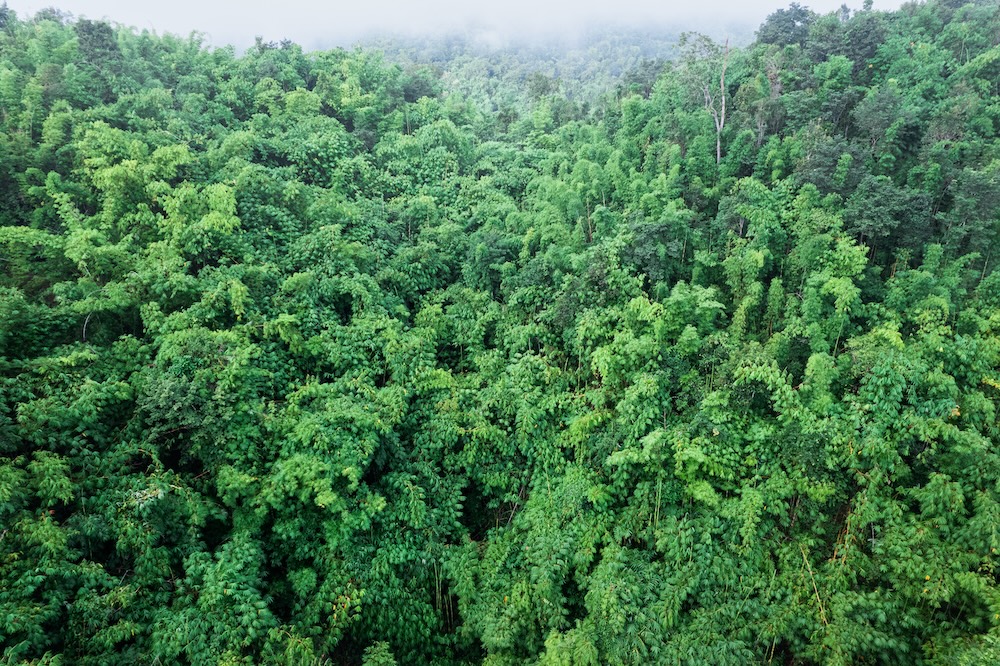Forests are often called the lungs of the Earth, but in truth, they act more like its beating heart — absorbing, circulating, and storing carbon in ways that regulate the planet’s climate. Together with the ocean, forests are among Earth’s most powerful carbon sinks. They absorb billions of tons of carbon dioxide (CO₂) each year, storing it in trees, soil, and ecosystems that span continents. Yet forests are not infinite. Their ability to buffer climate change depends on whether humanity chooses to protect or exploit them.
What Makes a Forest a Carbon Sink?
A carbon sink is any system that stores more carbon than it releases. Forests do this by:
- Photosynthesis: Trees and plants absorb CO₂ from the air, turning it into sugars to grow trunks, branches, and leaves.
- Biomass storage: Carbon is locked in living trees for decades or even centuries.
- Soil storage: Forest soils hold massive amounts of carbon in roots, fungi, and decaying organic matter.
- Deadwood and litter: Fallen logs and forest debris slowly decompose, storing carbon along the way.
Globally, forests absorb around 7.6 billion metric tons of CO₂ per year — roughly twice the annual emissions of the entire United States.
The Types of Forest Carbon Sinks
Tropical Rainforests
- Found in the Amazon, Congo Basin, and Southeast Asia.
- Store the most carbon per hectare of any ecosystem.
- Their dense vegetation and rapid growth mean they absorb CO₂ year-round.
- But deforestation for cattle ranching, palm oil, and logging has turned some areas of the Amazon into net carbon sources.
Boreal Forests
- Stretch across Canada, Russia, and Scandinavia.
- Contain vast amounts of carbon, not just in trees but also in peat and frozen soils.
- Climate warming is thawing permafrost, releasing CO₂ and methane — a dangerous feedback loop.
- Fires are increasing in intensity, threatening to reverse their carbon sink role.
Temperate Forests
- Cover North America, Europe, China, and parts of South America.
- Less carbon-dense than rainforests, but still crucial.
- Many temperate forests in the Northern Hemisphere are regrowing after centuries of logging, currently absorbing large amounts of carbon.
- Their resilience shows the importance of reforestation.
Mangroves and Coastal Forests
- Thrive in tropical coastal zones.
- Extremely carbon-dense due to both above-ground biomass and carbon-rich soils.
- Store up to four times more carbon per hectare than terrestrial forests.
- Protect coasts from erosion and storms while also sequestering carbon in tidal soils for millennia.
Why Forests Matter as Carbon Sinks
Forests provide a natural climate solution unmatched in scope.
- Climate regulation: Absorbing CO₂ slows global warming.
- Water cycles: Forests influence rainfall patterns and groundwater.
- Biodiversity: Home to 80% of terrestrial species.
- Human survival: Forests supply oxygen, medicine, and livelihoods for over a billion people.
Without forests, climate change would already be far more severe.
The Pressures Threatening Forest Sinks
- Deforestation: Agriculture, mining, and logging drive loss at a rate of 10 million hectares per year.
- Fires: Both natural and human-caused, intensified by climate change.
- Pests and diseases: Spread by warming, killing trees faster than they can regrow.
- Fragmentation: Roads and development break forests into smaller patches, weakening ecosystems.
- Policy and exploitation: Short-term profit often outweighs long-term stewardship.
If deforestation were a country, it would rank as the third-largest emitter of CO₂ in the world.
The Ripple Effects of Forest Loss
Forests are not just local ecosystems — they are planetary regulators.
- Amazon dieback would disrupt rainfall across South America, harming crops and water supplies.
- Boreal thaw would unleash vast stores of CO₂ and methane, accelerating warming.
- Mangrove loss removes one of the strongest natural barriers against rising seas and storms.
These ripple effects show how decisions in one region affect the whole Earth.
Solutions: Protecting and Restoring Forest Carbon Sinks
- Stop deforestation: Protect standing forests first. Mature forests store more carbon than young ones.
- Reforestation and afforestation: Plant new trees in degraded areas, but with native species, not monocultures.
- Agroforestry: Integrating trees into farming landscapes to capture carbon while producing food.
- Community stewardship: Indigenous communities manage one-third of intact forests globally and often achieve the best conservation results.
- Policy and finance: Carbon markets, subsidies, and international agreements can incentivize forest protection.
Forests are not a replacement for reducing fossil fuels, but they are an essential partner in stabilizing climate.
FAQs
Which forests store the most carbon?
Tropical rainforests and mangroves store the most carbon per hectare, though boreal forests hold vast carbon in soils and peat.
Are young forests or old forests better for carbon storage?
Young forests absorb CO₂ quickly, but old forests store larger total amounts of carbon and remain critical long-term sinks.
Can tree planting solve climate change?
Tree planting helps, but cannot offset continued fossil fuel use. Protecting existing forests is far more effective.
Why are mangroves called “blue carbon” sinks?
Because they store carbon both in biomass and in tidal soils, where carbon can remain for millennia.
Is the Amazon still a carbon sink?
Parts of the Amazon have become net carbon sources due to deforestation and fires, but intact regions remain powerful sinks.
Final Thoughts
Forests are not simply landscapes of trees. They are living carbon systems that regulate the planet’s climate, water cycles, and biodiversity. From tropical rainforests to boreal tundra to coastal mangroves, forests sustain life far beyond their boundaries.
But their role as carbon sinks is not guaranteed. When forests are cut, burned, or degraded, the carbon they stored is released back into the air, and their buffering role collapses. Humanity cannot afford to let forests flip from sinks to sources.
Protecting forests is not only about carbon. It is about justice, survival, and dignity for people and species who depend on them. Forests are Earth’s inheritance — and whether they remain carbon sinks depends on choices we make now.









Reader Interactions